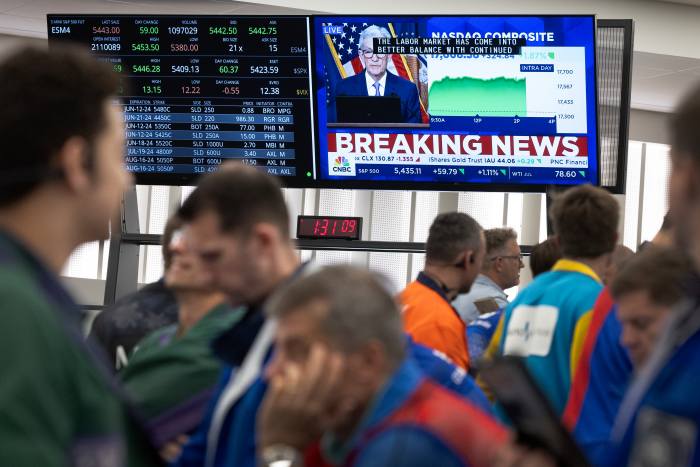The Federal Reserve faces perhaps its most important decision in years this week, with investors braying for a big move from the central bank following one of the longest runs of rate hikes on record and the highest base borrowing costs in more than two decades.
The Fed, which has kept its key lending rate at around 5.375% since July of last year, has faced both criticism for moving too slowly in response to the huge inflationary impact triggered by the Covid pandemic and for not moving quickly enough to reduce rates as price pressures eased closer to its longer-term target.
The latter allegation was crystalized by Chairman Jerome Powell's decision to hold rates steady at the central bank's most recent policy meeting in July while stressing that cuts won't come "until we have gained greater confidence that inflation is moving sustainably toward 2%".
The European Central Bank, meanwhile, has cut its benchmark deposit rate twice since June—the latest last week, taking it to 3.5%—and signaled more reductions to come before the end of the year as the world's biggest economic bloc flirts with recession.
That's led to speculation that the Fed might opt for a bigger rate cut this Wednesday to compensate for its lengthy pause and lay the groundwork for future cuts as the labor market cools and economic growth moderates over the autumn months and beyond.

Markets are pushing for a big rate move from the Fed next week. A cut would mark its first reduction in more than four years.
"The Fed is behind the curve. Again," said Jan Szilagyi, founder of investment analytics group Toggle AI. "That’s not as tragic as it sounds because they’ll have a chance to catch up with a larger cut in September."
"The economy isn’t exactly falling off the cliff, but momentum and many leading macro indicators are starting to suggest that a more aggressive easing will be necessary," he argued. "After navigating the last few years quite deftly, it would be a shame to miss this opportunity."
Inflation is still sticky: car insurance, daycare, rent
Inflation data, however, hasn't justified such a move yet, and the labor market, which represents the second side of the Fed's twin mandate, remains solid enough to deliver both wage growth and historically low unemployment.
Core price pressures nudged higher last month, with big increases for things like car insurance, daycare, and rent, none of which are likely to be affected by Fed policies.
"The Fed is concerned that inflation has built up momentum over the last few years, which is still showing up in rapid increases of sticky service prices like car insurance," said Bill Adams, chief economist for Comerica Bank in Dallas.
"They're weighing the stickiness of service-price inflation on the one hand against the softening of the job market on the other hand," he added. "The tradeoff makes them more likely to cut rates by a quarter percent at next week’s decision than make a larger half-percent cut."
Still, bets on a big Fed rate move next week have accelerated quickly over the past few days. CME Group's FedWatch indicates a 45% chance of a half-point rate cut, up from just 28% last week.
More cuts are expected over the Fed's next two meetings in November and December, with FedWatch pegging the benchmark Federal Funds Rate at 4.375% by the end of the year.
Job market shows notable hiring slowdown
The reasons for that are hard to pin down: Data from the Commerce Department's reading of the Producer Price Index, some of which feeds into the Fed's preferred inflation gauge, suggest moderating pressures over the coming months.
